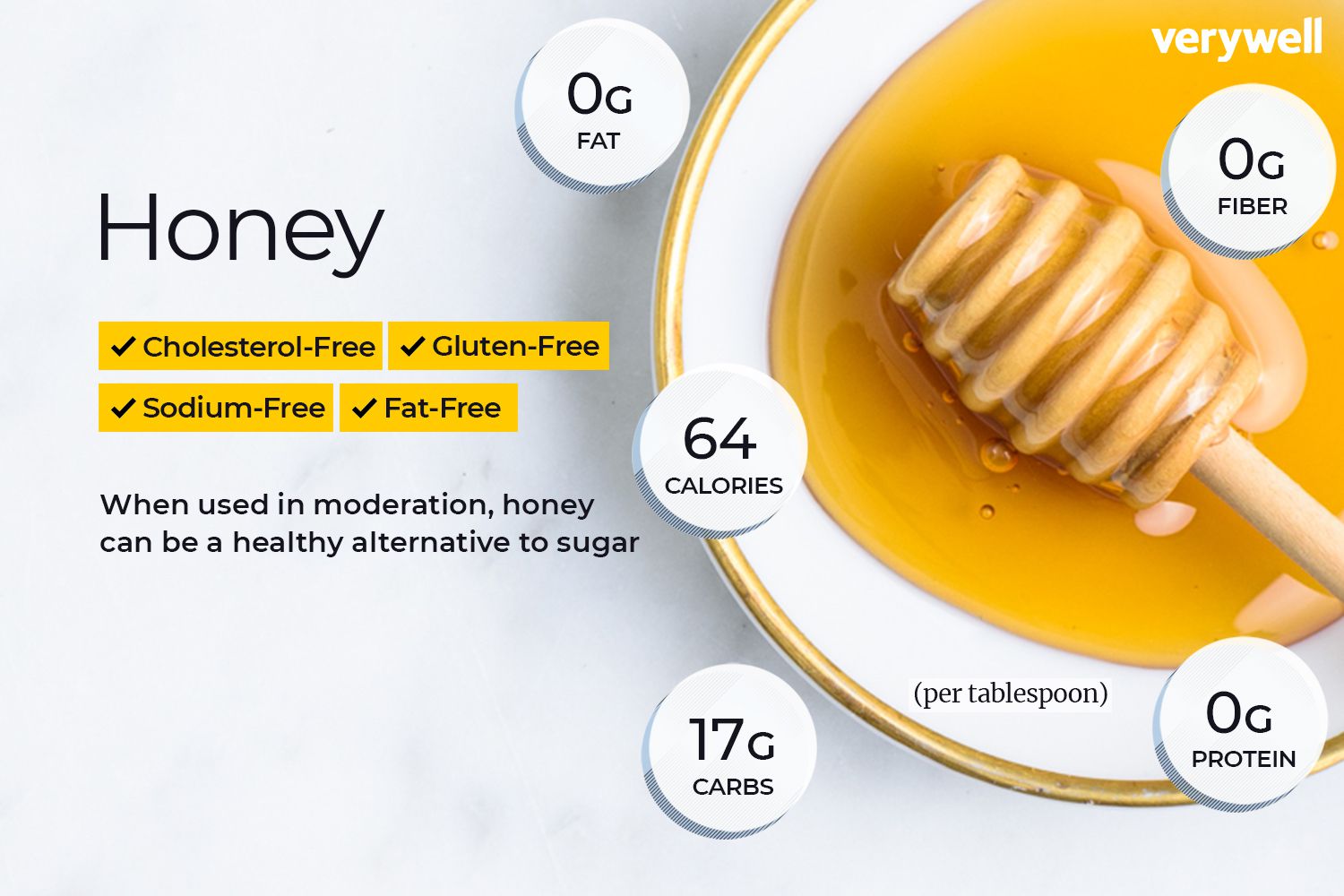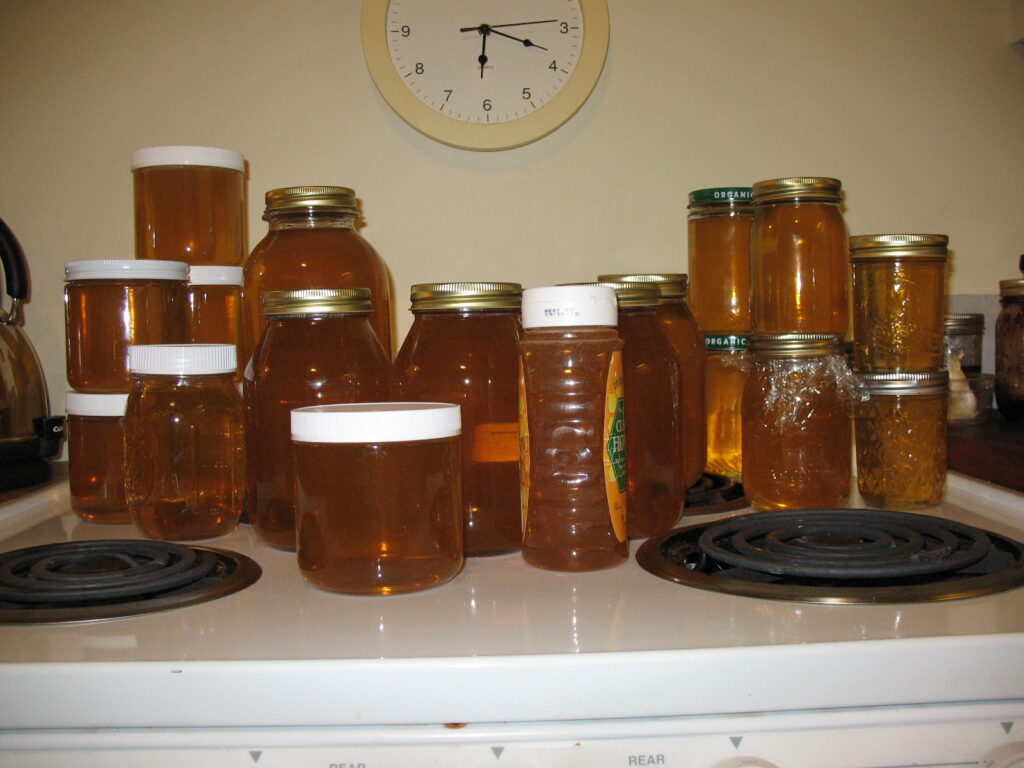
Loved by many for its sweet and delicious taste, honey has long been a pantry staple. But did you know that there is more to honey than just its sweetness? In this article, we will explore the nutritional benefits of honey and uncover the hidden treasures it holds. Get ready to discover the goldmine of nutrients that lies within this natural wonder.
The Composition of Honey
Honey is not just a sweet treat; it is a complex mixture of various substances that contribute to its unique composition. Understanding the components of honey can give us insight into its nutritional value and potential health benefits.
The Primary Components of Honey
The primary components of honey include carbohydrates, water, and sugars. Carbohydrates, predominantly in the form of fructose and glucose, make up the majority of honey’s composition. These sugars provide honey with its sweet taste and serve as a source of energy.
Water content in honey can vary but is typically around 17-20%. The presence of water in honey not only affects its consistency but also determines its ability to resist spoilage.
Secondary Components of Honey
In addition to the primary components, honey contains a variety of secondary components that contribute to its nutritional and medicinal properties. These include antioxidants, vitamins, minerals, enzymes, and other bioactive compounds.
Antioxidant Properties of Honey
Honey is rich in antioxidants, which are compounds that help protect our cells from damage caused by harmful molecules called free radicals. The antioxidants found in honey are primarily derived from two groups of compounds: polyphenols and flavonoids.
Polyphenols in Honey
Polyphenols are a class of compounds widely distributed in plants, known for their antioxidant and anti-inflammatory properties. Honey contains a diverse range of polyphenols, including flavonoids, phenolic acids, and other polyphenolic compounds. These antioxidants play a crucial role in neutralizing free radicals and reducing oxidative stress in the body.
Flavonoids and Their Role in Honey
Flavonoids are a subgroup of polyphenols found in honey. They are known for their potential health benefits, including anti-inflammatory and immune-boosting properties. The presence of flavonoids in honey contributes to its antioxidant capacity and may play a role in its potential therapeutic effects.
The Presence of Phenolic Acids
Phenolic acids are another group of polyphenols found in honey. They have been studied for their potential anti-inflammatory and antioxidant effects. The presence of phenolic acids in honey adds to its overall antioxidant activity and may contribute to its health-promoting properties.

Vitamins and Minerals in Honey
Honey contains a range of vitamins and minerals, albeit in small amounts. While the exact nutritional profile of honey can vary depending on its floral source, common vitamins found in honey include B vitamins.
B Vitamins in Honey
B vitamins are essential for various bodily functions, including metabolism, energy production, and nervous system health. Honey contains trace amounts of B vitamins, including thiamin (B1), riboflavin (B2), niacin (B3), pantothenic acid (B5), pyridoxine (B6), and biotin (B7). While honey may not be a significant source of these vitamins, every little contribution adds to our overall nutrient intake.
The Mineral Content of Honey
Honey also contains trace amounts of minerals, including calcium, potassium, iron, zinc, phosphorus, manganese, and copper. These minerals play important roles in various physiological processes, such as bone health, immune function, and enzyme production. While the concentration of these minerals in honey is relatively low, they can still contribute to our overall micronutrient intake.
Enzymes in Honey
Enzymes are protein molecules that catalyze biochemical reactions in our bodies. Honey contains several enzymes, each with its unique functions and benefits.
Glucose Oxidase and Its Significance
Glucose oxidase is an enzyme found in honey that plays a significant role in its antibacterial properties. This enzyme reacts with glucose in the presence of oxygen to produce gluconic acid and hydrogen peroxide. The production of hydrogen peroxide helps inhibit the growth of bacteria, making honey a natural antimicrobial agent.
Invertase and Its Function
Invertase, also known as sucrase, is an enzyme responsible for breaking down sucrose into its component sugars, glucose, and fructose. This enzymatic activity contributes to the sweetness of honey and also makes it easier for our bodies to absorb and utilize the sugar content.
Amylase and Protease Enzymes in Honey
Honey also contains small amounts of amylase and protease enzymes. Amylase breaks down complex carbohydrates into simpler sugars, while protease aids in the digestion of proteins. While the levels of these enzymes in honey are relatively low, they can contribute to the overall digestive process when consumed.

Honey as a Natural Energy Source
Carbohydrates are a primary source of energy for our bodies, and honey is a natural and easily digestible source of carbohydrates. The carbohydrate composition of honey, primarily fructose and glucose, makes it an ideal fuel for both endurance and high-intensity activities.
Carbohydrates in Honey
Honey’s carbohydrate content consists mainly of monosaccharides (fructose and glucose) and disaccharides (sucrose). These sugars are quickly absorbed by our bodies and provide a readily available source of energy. The unique combination of sugars in honey allows for a sustained release of energy, making it an excellent choice for athletes and anyone needing an energy boost.
Honey for Pre and Post-Workout Energy
Honey’s rapid absorption and easy digestibility make it an ideal pre and post-workout energy source. Consuming honey before a workout can provide a quick source of energy, while consuming it after exercise can help replenish glycogen stores and aid in muscle recovery. Incorporating honey into your fitness routine can enhance performance, reduce muscle fatigue, and promote optimal recovery.
Honey for Wound Healing
Honey has a long history of use in wound healing and has gained recognition for its potential therapeutic properties in modern medicine. Several factors contribute to honey’s effectiveness in wound healing.
Hydrogen Peroxide Production in Honey
One of the key mechanisms behind honey’s wound healing properties is its production of hydrogen peroxide. Glucose oxidase, an enzyme present in honey, reacts with glucose and oxygen to release hydrogen peroxide. Hydrogen peroxide acts as an antiseptic and helps prevent infection in wounds.
Acidic pH and Its Impact on Wounds
Honey has a relatively low pH level, typically ranging from 3.2 to 4.5. This acidic environment creates unfavorable conditions for bacteria to thrive, further contributing to honey’s antimicrobial properties. The acidic pH of honey also helps in wound healing by facilitating the breakdown of dead tissue and promoting the regeneration of healthy tissue.
Promotion of Tissue Regeneration
Honey’s unique composition, including its high sugar content and low water activity, creates an environment that promotes tissue regeneration. The sugars in honey can help draw moisture out of wounds, making them less favorable for bacterial growth. Additionally, honey’s bioactive compounds, such as antioxidants and enzymes, may stimulate tissue repair and the formation of new blood vessels, leading to faster wound healing.

Gut Health Benefits of Honey
Our gut microbiota, composed of trillions of microorganisms, plays a crucial role in our overall health and well-being. Honey has been found to have several positive effects on gut health.
Prebiotic Properties of Honey
Prebiotics are non-digestible compounds that promote the growth and activity of beneficial gut bacteria. Honey, particularly raw and unprocessed varieties, contains prebiotic compounds like oligosaccharides, which serve as food for the beneficial bacteria in our gut. By nourishing these bacteria, honey supports a healthy gut microbiota and aids in maintaining digestive health.
Positive Impact on Gut Microbiota
Studies have shown that honey consumption can help increase the population of beneficial bacteria, such as Bifidobacteria and Lactobacilli, in the gut. These bacteria play a crucial role in maintaining gut health and have been associated with various health benefits, including improved digestion, enhanced immune function, and reduced risk of gastrointestinal disorders.
Potential for Preventing Gastrointestinal Disorders
The beneficial effects of honey on gut health go beyond its prebiotic properties. Honey’s antimicrobial properties, particularly its ability to inhibit the growth of harmful bacteria, can help maintain a healthy balance of gut flora and prevent the overgrowth of pathogens. This may help reduce the risk of gastrointestinal disorders, such as diarrhea, constipation, and inflammatory bowel diseases.
Honey’s Anti-inflammatory Effects
Inflammation is a natural response of the immune system to injury or infection. However, chronic inflammation can contribute to the development of various diseases. Honey has been found to possess anti-inflammatory properties that may help mitigate inflammation-related conditions.
Reduction of Inflammation Markers
Research has shown that honey can reduce the levels of certain inflammatory markers in the body, such as C-reactive protein (CRP) and pro-inflammatory cytokines. These markers are associated with chronic inflammation and are often elevated in individuals with inflammatory conditions. By lowering these markers, honey may help regulate the inflammatory response and reduce the risk of chronic diseases.
Modulation of Immune Responses
Honey’s bioactive compounds, including antioxidants and polyphenols, have been shown to modulate immune responses in the body. They can enhance the activity of immune cells, such as macrophages and lymphocytes, that play a crucial role in fighting infections and regulating inflammation. These immune-modulating effects of honey contribute to its potential anti-inflammatory properties.
Honey’s Effect on Chronic Diseases
Chronic diseases, such as cardiovascular disease, diabetes, and certain types of cancer, are often associated with chronic inflammation. The anti-inflammatory properties of honey, combined with its antioxidant activity, may help reduce the risk of these diseases. While more research is needed to fully understand the mechanisms behind honey’s effects on chronic diseases, incorporating honey as part of a balanced diet may have long-term health benefits.

Honey’s Role in Improving Sleep
A good night’s sleep is essential for our overall well-being. Honey has been traditionally used as a natural remedy for improved sleep, and scientific research has shed light on its potential sleep-promoting properties.
Melatonin Content in Honey
Melatonin is a hormone produced by the pineal gland that regulates sleep-wake cycles. Honey has been found to contain small amounts of melatonin, which may contribute to its sleep-enhancing properties. Melatonin can help regulate sleep patterns and promote better sleep quality.
Enhancement of Sleep Quality
Honey’s potential to enhance sleep quality lies not only in its melatonin content but also in its overall nutritional profile. The carbohydrates in honey stimulate the release of insulin, which in turn promotes the uptake of tryptophan, an amino acid precursor to serotonin. Serotonin is then converted into melatonin, further supporting the sleep-inducing effects of honey.
Promotion of Relaxation and Stress Reduction
Honey’s natural sweetness and rich flavor can promote relaxation and help alleviate stress. Enjoying a spoonful of honey before bedtime can create a calming and soothing effect, making it easier to unwind and prepare for a restful night’s sleep. The ritual of savoring honey can also serve as a form of self-care, contributing to a relaxed state of mind.
Conclusion
While honey is often appreciated for its delicious taste, its nutritional value and potential health benefits extend far beyond just sweetness. With its diverse composition of carbohydrates, antioxidants, vitamins, minerals, enzymes, and bioactive compounds, honey offers a range of potential health-promoting properties.
From its antioxidant and anti-inflammatory effects to its role in wound healing, gut health, and sleep improvements, honey has been utilized for various therapeutic purposes throughout history. Incorporating honey into a balanced diet can provide not only a natural and versatile sweetener but also a valuable source of nutrition and potential health benefits.
As with any food or natural remedy, it is important to choose high-quality honey and consume it in moderation as part of a well-rounded diet. The unique flavors, textures, and nutritional composition of different types of honey offer a world of exploration, allowing you to savor not only the sweetness but also the abundant nutritional goldmine that lies within each jar. Embrace the richness of honey’s composition and let it nourish your body and delight your taste buds as nature’s golden treasure.
